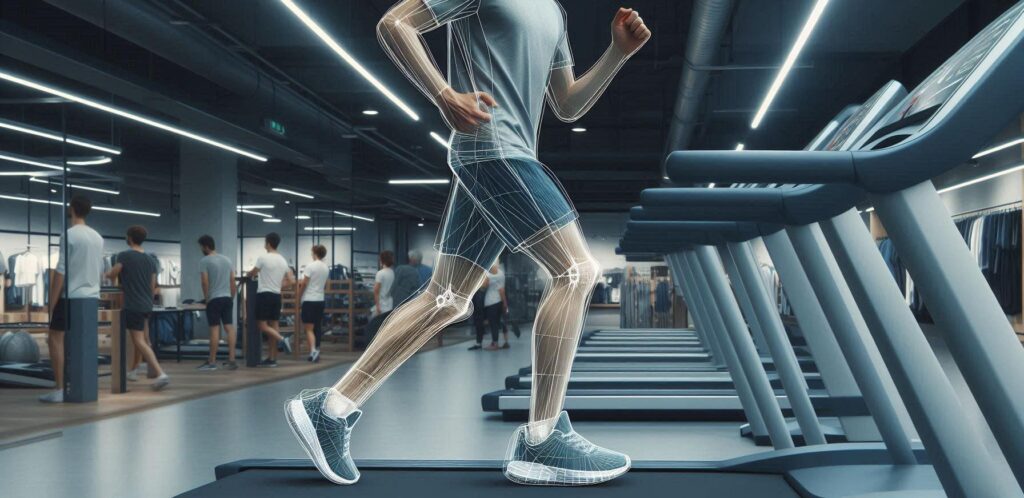

When it comes down to using AI in footwear recommendations, we can see that AI tools are transforming how athletes and casual runners select shoes. A major advancement is the use of motion analysis to assess an individual’s gait (walking/running style) and posture. This allows the creation of personalized recommendations for footwear, improving performance and reducing the risk of injury.
It starts with understanding gait and posture analysis. The gait analysis involves studying how a person walks or runs. Different running styles (neutral, overpronation, underpronation) affect shoe requirements. The posture analysis looks at how the body is aligned during movement, focusing on how different postures affect shoe cushioning and stability needs. At RunPerfect, we see that there is a lot over “over-analyses”. Our bottom line is the running style, from a sagittal plain angle.
There are several AI tools in motion analysis available, where AI uses video footage of runners to analyze their stride, foot positioning, and overall movement. For an instore analyses, there is no need for expensive high-speed cameras. Even using a simple smartphone based film can feed AI algorithms. These can analyze data from the footage, identifying patterns in foot placement, ankle angles, knee movements, and posture – but choosing the right parameters (science based) will limit complexity and improve the in-store recommendation. This also prevents the need for wearable sensors. These optional devices that provide additional data on ground reaction forces and movement efficiency are for a recreational runner in a sporting goods store superfluous.
Our RunPerfect science team has assessed the key components AI can analyze, and this concerns “the usual suspects”, like the foot strike pattern, stride length, knee & hip flexion, ground contact time. But they have selected AI data which is enough to recommend the right running shoes, focusing on gait type & shoe match. This leads to recommendations for
Our team has the option to use AI for posture and support needs. Our AI detects if someone leans forward too much or arches their back, helping suggest shoes with specific heel-to-toe drops or stability features. But the focal point is to keep the video gait analyses a practical application for sales staff in a retail environment. The In-Store Setup is really simple: Retailers use AI-powered systems where customers run on a treadmill or walk across a “track” while being recorded. The AI system provides immediate shoe recommendations based on real-time analysis. And, with advances in smartphone technology, AI apps can use phone cameras to conduct basic gait analysis. This can help runners get personalized recommendations remotely as a preparation before coming into the store, to try the actual shoes.
Conclusion: The Future of Shoe Selection
AI-powered motion analysis is making personalized shoe recommendations more accessible to the general sporting goods store which wants to improve the quality of the sales process. By analyzing just the gait, sales staff are able to select shoes that not only fit their customers’ style but also help prevent injuries and enhance performance.